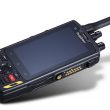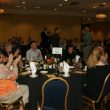LMCC president sets agenda for land mobile radio advocacy
Acquiring additional radio spectrum for private wireless and public safety use and resolving lingering issues connected with spectrum refarming are two goals articulated by Washington telecommunications attorney Robert M. Gurss as the newly elected president of the Land Mobile Communications Council.
“Last year, LMCC advocated the creation of a Land Mobile Communications Service. We filed comments asking for spectrum at 1.4GHz,” Gurss said.
The FCC has opened a proceeding to decide whether and how to allocate 10MHz of spectrum at 1.4GHz for land mobile use. If allocated, most of it appears destined for auction and eventual purchase by a band manager. Band managers sometimes are spectrum users themselves, and a band manager at 1.4GHz might turn much of the spectrum for its own use.
The remaining spectrum under a band manager’s administration might be leased to private users or, more likely, to commercial carriers.
“LMCC filed comments to secure some pieces of that 1.4GHz allocation for private land mobile radio services. It’s a continuing struggle to prevent all of the spectrum from going to commercial services,” Gurss said.
Most LMCC members represent private wireless, where users are licensees.
“User licensing is perceived as an old concept, but it isn’t obsolete,” Gurss said. “Critical industries cannot easily rely on commercial providers. Some of their operations can be and are moving to commercial, but so much of what typical LMCC members do really needs to be done on their own radio systems.”
Gursss said that the FCC understands the need for private systems, yet “it takes constant education because there is a perception that ‘Why doesn’t everyone use cellular?’ Public safety may have a more obvious case, but many of those arguments apply to private wireless as well.”
With spectrum refarming, Gurss said that the LMCC should advocate “putting teeth into refarming for requirements to convert to spectrum-efficient technology by a date certain.”
Although the FCC closed the refarming proceeding, Gurss said that was a formality, and that several issues remain unresolved.
“The core of the rules that were adopted is that for equipment manufacturers to get type acceptance, they must meet efficiency guidelines. But users don’t have to convert. The FCC should either require users to implement the new technology or limit the importation of equipment that doesn’t meet the narrowband requirements,” he said.
Regarding the VHF and UHF bands, Gurss said that the LMCC has been talking with the FCC about an audit process that could identify licenses no longer in use, thereby improving frequency coordination results.
Gurss is an attorney with Shook, Hardy & Bacon. He was elected at LMCC’s April 20 meeting in Washington.
LMCC also elected Al Ittner as vice president. Ittner is manager of spectrum and regulatory strategy for Motorola’s Commercial, Government and Industrial Solutions Sector, and he represents the Telecommunications Industry Association to the LMCC.
Donald J. Vasek was elected as LMCC’s secretary-treasurer. Vasek is executive director of the spectrum operations and analysis division at the Industrial Telecommunications Association.
Elected as directors were LMCC’s immediate past president, Michele C. Farquhar, a partner at the law firm of Hogan & Hartson, representing the American Automobile Association; Thomas J. Keller, an attorney with the law firm of Verner Liipfert, Bernhard, McPherson & Hand, representing the Association of American Railroads; and past LMCC president Paul B. Najarian, telecommunications and telematics systems director at the Intelligent Transportation Society of America.
Among LMCC’s 22 member organizations are several that represent land mobile radio licensees. Those organizations also have been certified by the FCC to provide frequency coordination for radio license applications. Equipment manufacturers also belong.












